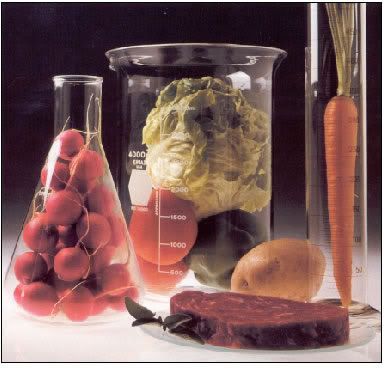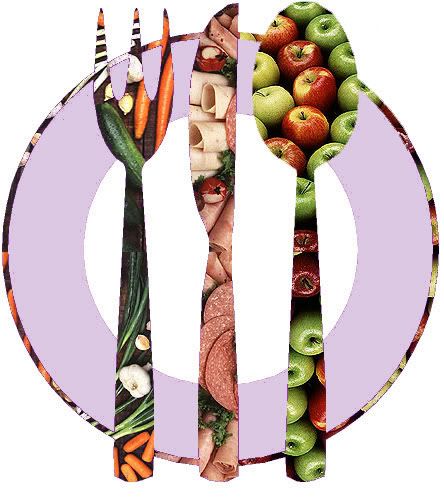Low-Fat Dietary Pattern and Risk of Invasive Breast Cancer.
THE HYPOTHESIS THAT A LOW-fat dietary pattern can reduce breast cancer risk has existed for decades. Supported by early rodent experiments, country-to-country comparisons linked higher dietary fat intake to breast cancer risk. However, case-control and cohort studies have had mixed results.
A meta-analysis of 12 international case-control studies reported a significant positive association between fat intake and breast cancer with relative risks of 1.00, 1.20, 1.24, 1.24, and 1.46 across total fat intake quintiles defined by one of the Canadian case-control studies. In contrast, an analysis of 7 Western cohort studies found no such association with relative risks of 1.00, 1.01, 1.12, 1.07, and 1.05 across energy-adjusted fat intake quintiles. A recent meta-analysis, including both case-control and cohort studies, comparing highest and lowest fat intake categories reported a relative risk for breast cancer of 1.13. Such inconsistent results may reflect limitations of the dietary assessment methods used; a recent study reported a significant positive association of fat intake and postmenopausal breast cancer incidence only when diet was measured with food diaries rather than a food frequency questionnaire (FFQ) used in most analytic epidemiological studies.
Previous randomized controlled trials have demonstrated the feasibility of achieving a dietary fat reduction among healthy postmenopausal women in a multicenter trial setting. Prior small-scale intervention trials have demonstrated reductions in serum estradiol levels among women undertaking a dietary pattern that is low in fat, and observational studies have linked low dietary fat intake both with low blood estrogen levels and low breast cancer risk.
Observational studies of consumption of vegetables and fruit in relation to breast cancer incidence have also yielded inconsistent results. Some summary analyses report an association with vegetable intake but not fruit intake, with more evidence for association from case-control studies than from cohort studies. Similarly, meta-analyses of case-control studies report a marginally lower breast cancer incidence at higher whole grain consumption levels but a recent large cohort study found no such association. Once again, inconsistency could be due to measurement error in dietary assessment or to other sources of bias, including recall bias in case-control studies.
The Women's Health Initiative (WHI) began in 1992 and included a full-scale randomized controlled trial with a dietary modification intervention consisting of consumption of a reduced amount of fat (20% of energy) and of an increased amount of vegetables and fruit (more than or =5 servings/d) and grains (more than or =6 servings/d) referred to herein as the low-fat dietary pattern. Breast cancer and colorectal cancer incidence are the primary outcomes of the trial and coronary heart disease is the secondary outcome. This dietary modification intervention trial is the first to directly assess the health benefits and risks of promoting a low-fat dietary pattern. This article reports the principal results on the incidence of breast cancer.
COMMENT
The WHI Dietary Modification Trial is the first large-scale randomized trial to test whether adopting a low-fat dietary pattern in the middle to later decades of life reduces the risk for breast cancer. The relatively intensive dietary intervention implemented in the WHI resulted in a significant and sustained reduction in fat intake and an increase in vegetable and fruit intake. After approximately 8 years of follow-up, breast cancer incidence was 9% lower for women in the dietary intervention group compared with women in the comparison group. Because incidence rates did not differ between the intervention group and the comparison group at the conventional .05 level of significance, chance provides an explanation for the modestly lower breast cancer incidence rates in the intervention group.
However, interpretation of these results needs to take into account the following. There were departures from the design assumptions that likely reduced study power. In addition, there was a significant interaction between the HR for the intervention group compared with the comparison group for baseline dietary fat consumption. Women in the intervention group with a higher baseline percentage of energy from fat provided stronger evidence for breast cancer reduction than women in the comparison group. Also, the HR varied among breast cancer subtypes defined by tumor hormone receptor characteristics. Such variation would not be expected if the intervention had no effect on breast cancer risk.
As noted above, there were certain departures from the original study design. Although accrual goals were met, recruitment took longer than anticipated and therefore the average follow-up at the planned trial completion date was 8.1 years, rather than the original target of 9 years. In addition, the difference in the percentage of energy from fat between the women in the intervention group and women in the comparison group was only about 70% of the design goal. Relatively few women met the dietary target of 20% of energy from fat: 31.4% at year 1 and 14.4% at year 6. Also, the differences in the consumption of vegetables and fruit and grains between the intervention and comparison groups were modest. If the WHI design assumptions are revised to take into account these departures, projections are that breast cancer incidence in the intervention group would be 8% to 9% lower than in the comparison group the trial would be somewhat underpowered (projected power of approximately 60%) to detect a statistically significant difference, which is consistent with the observed results. This perspective is further supported by our analyses demonstrating that the magnitude of the breast cancer HR was consistent with original design assumptions in the subset of adherent women.
The argument for some intervention effect on breast cancer risk is strengthened also by the HR variation according to the progesterone receptor status of the tumor and according to the combined estrogen and progesterone receptor status. These variations were detected even though the tumor classification was based on local receptor laboratory results without standardization across clinical centers. Dependence of dietary pattern associations on breast tumor hormone receptor status also has been described in a preliminary report from the Women's Intervention Nutrition Study and in the Nurses' Health Study cohort. The HR variations across tumor characteristics are perhaps not surprising because breast cancer is increasingly recognized as a heterogeneous diagnosis in which medical interventions are effective primarily in subgroups defined by specific biological properties. Of interest also in relation to the finding of estradiol reduction among women in the intervention group are clinical trial results demonstrating the effectiveness of aromatase inhibitors, such as anastrazole in the ATAC (Arimidex, Tamoxifen, Alone or in Combination) trial, for breast cancer treatment.
Trial results may suggest that factors other than estrogen contribute to any effect of a low-fat dietary pattern on breast cancer risk. Potential mechanisms include influence on insulin levels, insulin-like growth factors, and markers of inflammation. The last is consistent with the suggestion that women having higher baseline white blood cell counts show greater evidence of intervention benefit.
There are a number of limitations to the WHI dietary modification trial, including the reliance on self-report methods to assess differences in dietary consumption between the intervention and comparison groups. However, relative changes between randomization groups in serum levels of [gamma]-tocopherol are consistent with intervention participant reports of decreases in consumption of added fats and oils and those of the carotenoids with FFQ differences in consumption of vegetables and fruit. Also, the available data are somewhat limited for the purpose of separating any breast cancer effect resulting from dietary fat reduction from that due to increases in the consumption of vegetables and fruit and/or grains. Similarly, there is limited potential to separate out the influence of any lifestyle changes or other nontargeted dietary changes that may result from adopting a low-fat dietary pattern. Additional biomarker data are being assembled to facilitate analyses of this kind.
In light of our findings, additional research on diet and breast cancer prevention could focus on those women most likely to benefit from a low-fat dietary pattern, such as those with diets habitually high in fat. The potential differential effect of a low-fat dietary pattern by tumor subtype should continue to further characterize these subtypes and encourage the exploration of underlying mechanisms. Observational studies examining associations between diet and breast cancer should consider the use of consumption estimates that are calibrated with appropriate biomarkers.
In conclusion, among postmenopausal women, a low-fat dietary pattern did not result in a statistically significant reduction in the risk of invasive breast cancer over an 8.1-year average follow-up period. However, nonsignificant trends were observed suggesting a reduced risk with a low-fat dietary pattern and incidence rate differences between groups are in agreement with design assumptions on acknowledging the dietary differences achieved. Because the health implications of a low-fat dietary pattern may take years to be fully realized, longer, planned, nonintervention follow-up may yield a more definitive comparison.
Conclusions:
Among postmenopausal women, a low-fat dietary pattern did not result in a statistically significant reduction in invasive breast cancer risk over an 8.1-year average follow-up period. However, the nonsignificant trends observed suggesting reduced risk associated with a low-fat dietary pattern indicate that longer, planned, nonintervention follow-up may yield a more definitive comparison.




2 Comments:
Whomever came up with the idea for a commodity charts was a genius!
Breast Cancer incidence
Common Breast Cancer Myths
The first myth pertaining to this disease is that it only affects women.
Second myth that is associated with this disease is that if one has found a lump during an examination, it is cancer.
Third is that it is solely hereditary
The next myth associated with breast cancer is downright ridiculous. Would you believe, that in this day and age, some individuals still think that breast cancer is contagious?
Conversely, some individuals foolishly believe that breast size determines whether or not one gets cancer.
Finally, another myth that is associated with this disease is that it only affects older people. This is not so. Although the chance of getting breast cancer increases with age, women as young as 18 have been diagnosed with the disease.
You can find a number of helpful informative articles on Breast Cancer incidence at breast-cancer1.com
Breast Cancer incidence
Post a Comment
<< Home